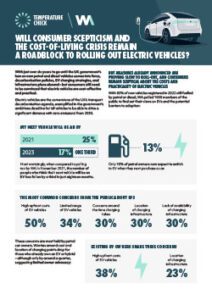Is it achievable to secure a clean power system by 2030? And even if it’s not achievable is it a helpful target to have in place to spur on the right decisions? That’s a question that divides policymakers and the energy industry.
Today the government sought to answer it by setting out their Clean Power Action Plan, following recent advice from the National Energy System Operator (NESO). So, what did we learn?
More of an outline of a plan than a detailed blueprint
This is a welcome plan that provides some important clarity on the government’s direction of thinking, developed by a new team in just a couple of months. However, it’s important to recognise that it doesn’t provide all the answers, and effectively sets out the crucial building blocks to get to clean power rather than a detailed blueprint.
This is reflected by the lack of a definitive ‘pathway’ – signaled by Head of 2030 Mission Control, Chris Stark in advance – and instead setting out capacity ranges for different technologies. Government – rightly – wants to retain flexibility for commercial negotiation and upcoming auction rounds.
Across many of the seven areas set out in the Action Plan, there were a series of consultations and policy processes confirmed – some newly announced, others already in train – from reforming the CfD auction process for renewables to developing a Low Carbon Flexibility Roadmap in 2025.
Decisions in 2025 will determine how on-track this plan remains
The energy industry likes to coin every year as a critical year for reaching net zero. But it’s not unreasonable to argue that 2025 presents a cross-roads. A number of expected decisions next year will determine the extent to which achieving Clean Power by 2030 is feasible.
As the Action Plan outlines, a bumper renewables auction is essential to stand any chance of meeting offshore wind targets. Many of the reforms announced today will support efforts to maximise procurement of future capacity. But with the Spending Review being delayed and continued constraints on public spending, ensuring the Treasury are fully aligned with this ambition will be the key.
On the other side, today’s Action Plan does provide some clarity over a timeline on market reform. The investment risk that generators fear has been well articulated. This decision will provide clarity on whether the government’s ambition is to do everything in their power to meet 2030 Clean Power or to create a perfect market, regardless of the implications this may have.
Genuine questions over affordability remain
Ministers have championed the shift to Clean Power as bringing down bills for consumers. Today’s Action Plan however, notably doesn’t provide conclusive clarity on the costs to reach Clean Power by 2030, and how they compare to meeting it at a different pace. NESO did consider this but have faced questions – including relentless scrutiny from the Opposition – over the assumptions they have used.
Today’s Plan doesn’t answer them and expect to see this challenge increase into the new year. Primarily this is a political challenge for Labour. But it also poses questions for industry, who will face continued questions about the cost of the transition, and who carries this.
Fundamentally, scepticism over the affordability of the transition raises questions over its sustainability and the public buy-in for the shift to clean power. The experience from the US shows that the electorate will judge a government on how they feel their living standards have changed during the political term.
Job numbers from socio-economic reports are helpful but on their own they are not enough: the public needs to genuinely see prosperity in their communities and the number on their energy bill coming down.
The focus on power decarbonisation by 2030 is absorbing attention, but it’s not the only game in town
The Action Plan reflects the political, policy, regulatory and industry focus on getting to 2030. The plan to prioritise planning consenting and grid connections for 2030 projects reflects this. If your project is identified as being able to contribute to 2030 you are in an incredibly strong position, if it isn’t you will face an uphill battle.
This presents challenges for two different groups within the energy market. Firstly, developers and projects whose projects and technologies are not going to play a role in this decade, but will be essential beyond that. That includes some CCS projects as well as emerging technologies, particularly in the nuclear field. Secondly, those organisations in the energy sector whose solutions are aimed at other parts of the market, whether that’s decarbonising heat, industry, or supplying power to consumers.
Both face a similar – and real – challenge. The focus of the government machine is on meeting the Mission, meaning that things that sit beyond this risk getting less attention or being deprioritised in policy processes. The welcome news is that there is policy action on the horizon that many of these organisations need to engage in, for example the upcoming Warm Homes Plan.
It also reiterates the need for impactful, engaging campaigning – showing off innovation, leaning into real people – to create excitement about what can come next, and substantial, evidenced thinking to show the critical decision points that will enable this.








